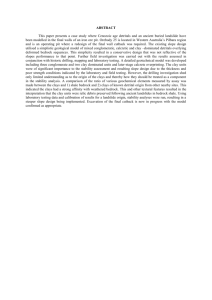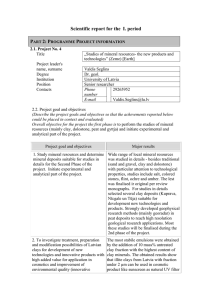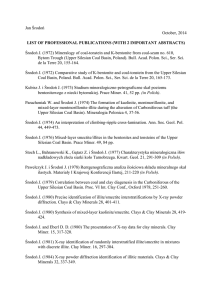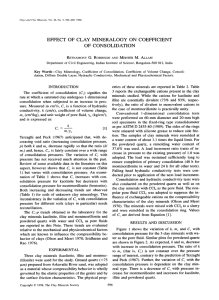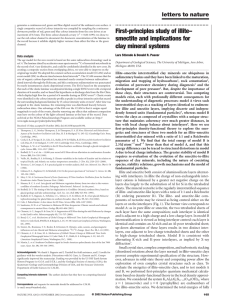I.Dusenkova_abstract_Latvia
advertisement
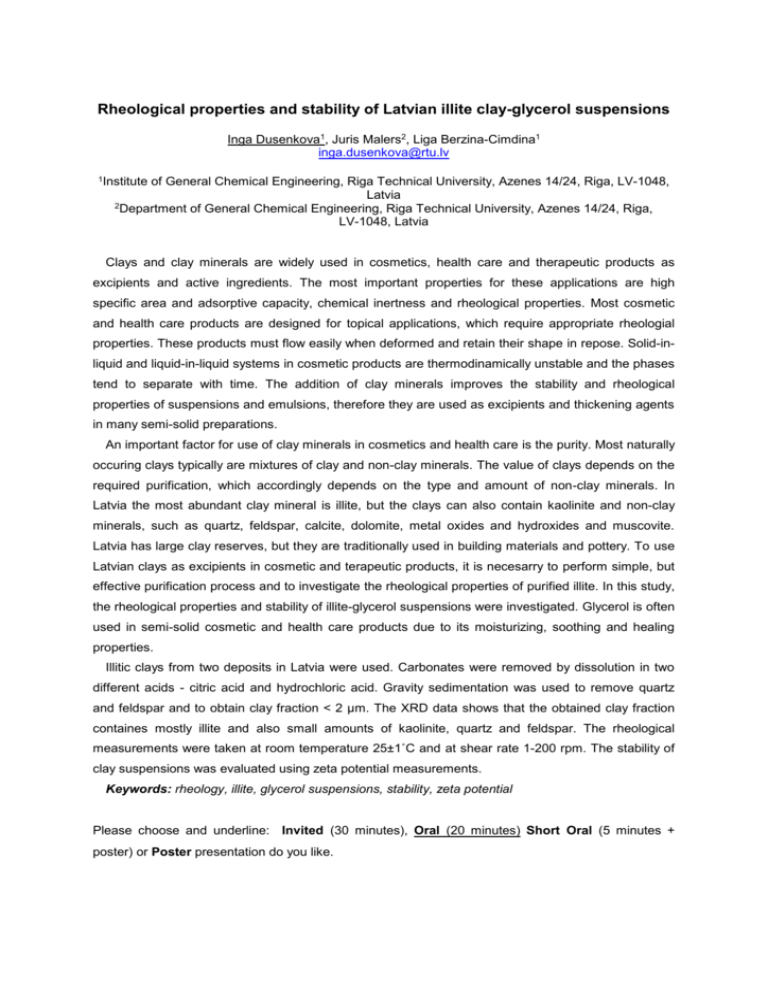
Rheological properties and stability of Latvian illite clay-glycerol suspensions Inga Dusenkova1, Juris Malers2, Liga Berzina-Cimdina1 inga.dusenkova@rtu.lv 1Institute of General Chemical Engineering, Riga Technical University, Azenes 14/24, Riga, LV-1048, Latvia 2Department of General Chemical Engineering, Riga Technical University, Azenes 14/24, Riga, LV-1048, Latvia Clays and clay minerals are widely used in cosmetics, health care and therapeutic products as excipients and active ingredients. The most important properties for these applications are high specific area and adsorptive capacity, chemical inertness and rheological properties. Most cosmetic and health care products are designed for topical applications, which require appropriate rheologial properties. These products must flow easily when deformed and retain their shape in repose. Solid-inliquid and liquid-in-liquid systems in cosmetic products are thermodinamically unstable and the phases tend to separate with time. The addition of clay minerals improves the stability and rheological properties of suspensions and emulsions, therefore they are used as excipients and thickening agents in many semi-solid preparations. An important factor for use of clay minerals in cosmetics and health care is the purity. Most naturally occuring clays typically are mixtures of clay and non-clay minerals. The value of clays depends on the required purification, which accordingly depends on the type and amount of non-clay minerals. In Latvia the most abundant clay mineral is illite, but the clays can also contain kaolinite and non-clay minerals, such as quartz, feldspar, calcite, dolomite, metal oxides and hydroxides and muscovite. Latvia has large clay reserves, but they are traditionally used in building materials and pottery. To use Latvian clays as excipients in cosmetic and terapeutic products, it is necesarry to perform simple, but effective purification process and to investigate the rheological properties of purified illite. In this study, the rheological properties and stability of illite-glycerol suspensions were investigated. Glycerol is often used in semi-solid cosmetic and health care products due to its moisturizing, soothing and healing properties. Illitic clays from two deposits in Latvia were used. Carbonates were removed by dissolution in two different acids - citric acid and hydrochloric acid. Gravity sedimentation was used to remove quartz and feldspar and to obtain clay fraction < 2 µm. The XRD data shows that the obtained clay fraction containes mostly illite and also small amounts of kaolinite, quartz and feldspar. The rheological measurements were taken at room temperature 25±1˚C and at shear rate 1-200 rpm. The stability of clay suspensions was evaluated using zeta potential measurements. Keywords: rheology, illite, glycerol suspensions, stability, zeta potential Please choose and underline: Invited (30 minutes), Oral (20 minutes) Short Oral (5 minutes + poster) or Poster presentation do you like.

